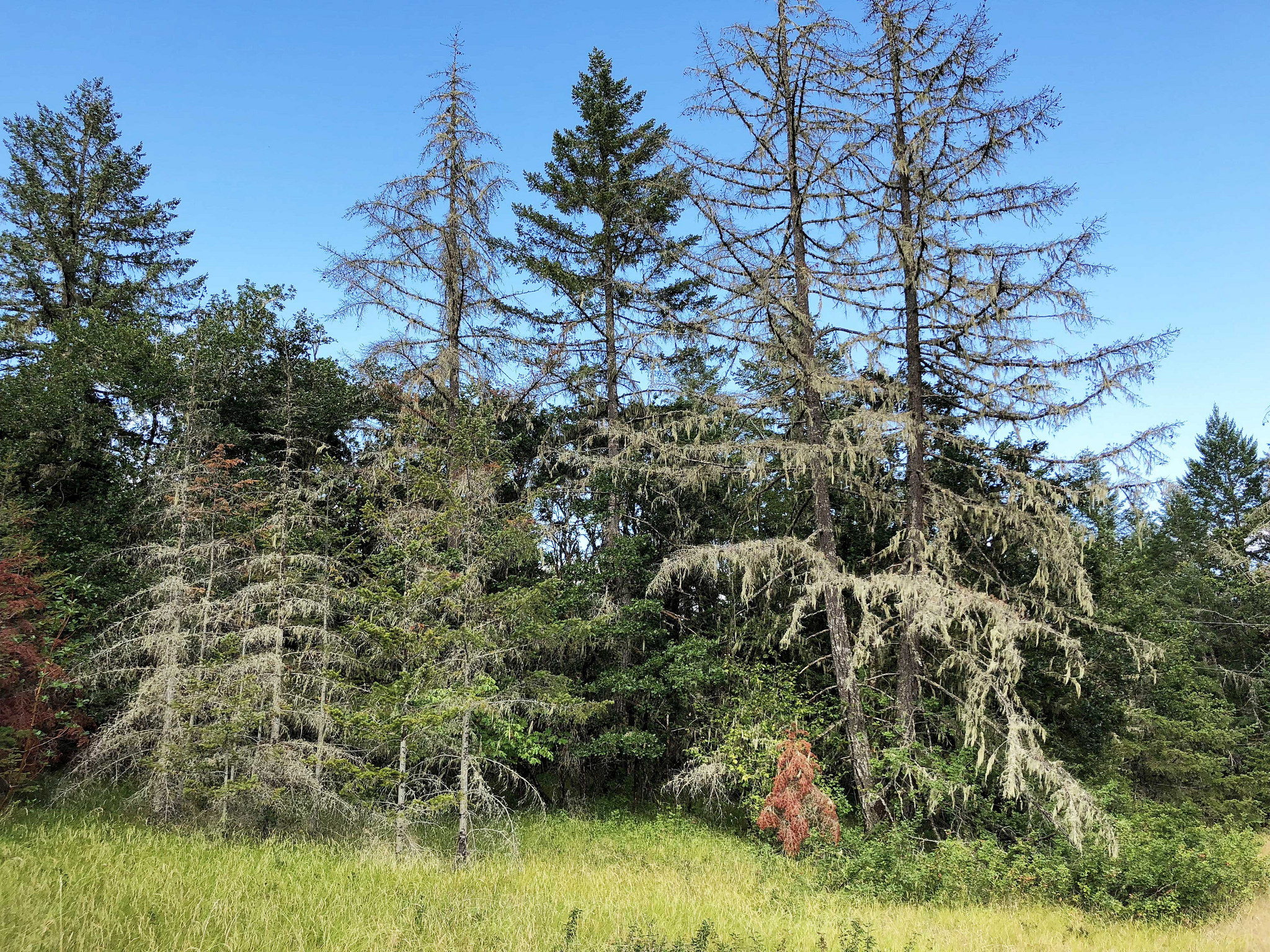Conifers in Oregon are getting hit hard by several years of drought, to the point that many are dying.
“Beginning in 2013-14, we started to see significant impact on Doug-firs in western Oregon, particularly in the south end of the state,” said Dave Shaw, a forest health specialist with Oregon State University Extension Service. “Now you’ll notice them checking out up and down the I-5 corridor.”
It’s past the point of just Doug-firs, however. Many conifers, including Western red cedar, incense cedar, grand fir and even valley ponderosa pine are succumbing, as well.
“This year alone we had the driest May in history and a record number of days over 90 degrees,” Shaw said. “That’s going to stress trees.”
The first signs of drought damage are dropping more needles than usual and/or an abnormally high number of cones (called “stress crop”). That will be followed by dead branches or tree tops, and sometimes entire trees. Symptoms of summer drought are often not seen until the following spring, Shaw said, although recent droughts have been severe enough for symptoms to appear in late summer or fall as they are this year.
People don’t think about watering big trees, he noted, but that’s the best method to prevent death or possibly bring a not-too-stressed tree back to health. One option is to consider watering at least six hours every two to four weeks August through September. Using a soaker hose wound around the tree out to the drip line (how far the branches reach) is much more efficient than other methods. Though the cost of water adds up, Shaw said, it’s cheaper than removing a large tree, which can cost thousands of dollars.
Historically conifers grew at higher elevations than the oak-dominant zone of the Willamette Valley. When Doug-firs and other conifers increased in abundance in the oak woodlands of the valley – driven by the end of controlled fires used by indigenous peoples – the trees were then on the lower end of their water needs.
“It’s an elevation-driven thing,” said Shaw, who has lost 12 Doug-firs on his five acres of land. “Precipitation drops as elevation drops. If you start out in the Coast Range where rainfall is typically over 80 or 90 inches of rain annually and go east to the middle of the valley, you’re historically getting only 40 to 45 inches of rain on average. So during a drought, trees that would normally be on the edge of their drought tolerance aren’t anymore. Some trees, particularly Doug-firs and grand firs, are very susceptible to drought below a certain elevation.”
Compounding the problem is that drought-affected trees are more susceptible to pests and diseases, including aphid- and scale-type insects, bark beetles, root and canker diseases. But many of the conifers surveyed don’t have insect or disease damage, Shaw said, reinforcing the diagnosis of drought damage.
“We’ve never come out of drought since 2014,” he said. “We never got back to normal.”
To get a good idea of Oregon’s current drought, check out the United States Drought Monitor, which shows most of Oregon in severe drought.
Steps to keep a tree healthy:
- Irrigate landscape trees during dry spells. Apply water slowly over many hours every two weeks; avoid frequent shallow watering.
- Apply mulch out to the drip line to maintain soil moisture. Don’t crowd mulch around trunk; keep it a few inches away.
- Do not alter drainage near established trees (ditches, ponds, fill or removal of soil).
- Prevent soil compaction caused by vehicle or animal traffic near trees. Compaction can damage roots, especially in clay soils.
- Reduce competing vegetation.
- Plant trees that are well suited for the site. Where Douglas-fir mortality is occurring, consider planting Willamette Valley ponderosa pine or hardwoods.
- Do not fertilize during drought conditions; fertilization can increase a tree’s water requirements.
One thought on “Conifers – especially Doug-firs – are suffering from drought”
Comments are closed.


I am concerned about the Birch trees . Ours have dying branches . Can they be saved?